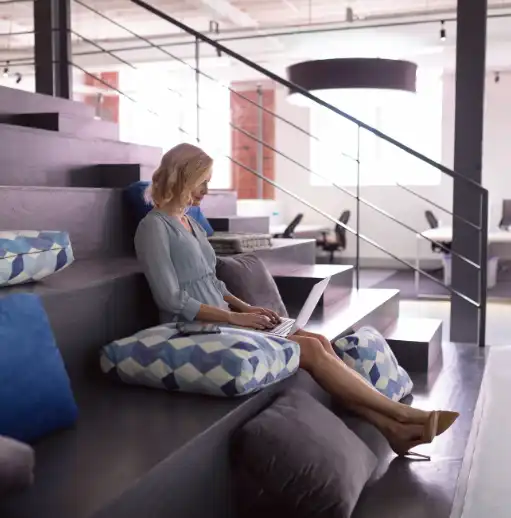
By Aleks Sheynkman
Director of Engineering
SpaceIQ
Workplace optimization isn’t about creating an environment with a cool aesthetic or installing a desking arrangement that’s trendy. It’s about making the most of your space from a functional standpoint. Design and desking strategies are important concepts, but they need to support efficient space utilization. But what is space utilization, really?
The practical side of utilization
Space usage is becoming increasingly important to facilities management. Executives are examining space utilization metrics and tracking key performance indicators (KPIs) to determine the best way to leverage the workplace for success.
The simplest definition of space utilization is using space to its fullest potential. But calculating and quantifying it is more difficult than it may seem—largely because it involves so many factors. The workplace is dynamic and trends impact individual workspaces. This affects utilization in myriad ways.
Ten people sitting at 10 desks may represent 100% occupancy, but it might not mean 100% utilization. If those 10 desks are used four days a week, utilization is only 80%. Similarly, if five employees constantly leave their desks to collaborate in a shared space, utilization for those five desks may be 50% for a portion of the day, and 75% overall. These rates skew depending on how you look at them—and how you interpret them depends on what metrics you’re measuring.
Calculating space utilization metrics
Understanding space utilization comes from calculating it in several different ways, depending on the metric most relevant to your objective. If there are too many desks or not enough collaborative workspaces, you might check occupancy rates. Or, if you’re trying to make due with fewer workspaces and a mobile workforce, determining peak workstation usage is relevant.
Here are some of the most common metrics for deducing space utilization and how they’re calculated:
- Occupancy: Space occupancy is occupied square footage divided by unoccupied square footage (multiplied by 100 to convert to a percentage). The result tells you how much available, unutilized square footage there is. Take the inverse to find the utilization rate.
- Density: Density provides a more precise occupancy calculation. Take the number of employees multiplied by an average 125-250 square feet per employee. The sum shows how space is appropriately occupied. Measure this against overall occupancy.
- Workstation occupancy: Use the same calculation is general occupancy, replacing square footage with workstations.
- Point-in-time occupancy: This calculation is best done using automated data collection software. By measuring total time of occupancy across every workstation and dividing it by the total hours in a workweek, you can determine when a workstation is used, for how long, and at what percentage of total available capacity.
- Peak usage: The value of measuring point-in-time occupancy is to identify trends in where and when employees use specific workspaces. Peak utilization tells a facility manager how valuable a space is at any given time of the day or week.
- Desk-to-employee ratio: The standard workplace configuration is 1:1 desk-to-employee. In modern workplaces, this ratio doesn’t necessarily represent optimal space utilization. An in-house employee working 40 hours a week may still occupy a desk full time for 100% occupancy. However, a 1:5 desk-to-employee ratio may also represent 100% utilization if five remote workers each use the same desk once per week.
To properly calculate space utilization, consider the following:
- Are you measuring total workplace or individual workspace utilization?
- Is your definition of utilization based on occupancy or usage?
- What’s your chief objective in understanding the usage and utilization of your space?
Measuring the above metrics against these questions provides context for measuring space utilization.
Putting utilization data to work
Space utilization data from relevant metrics provides decision-makers with information to affect positive change in the workplace. Unused desks become much-needed collaboration spaces. An open-air floor plan morphs into desk neighborhoods. Static desks become hot desks. Utilization trends inform better desking arrangements, which aid efficiency and productivity.
More than measuring pure occupancy or desk-to-employee ratios, surveying space utilization through a variety of metrics is the best way to contextualize your workplace.
Keep reading: Office space management software tips and guidelines.




